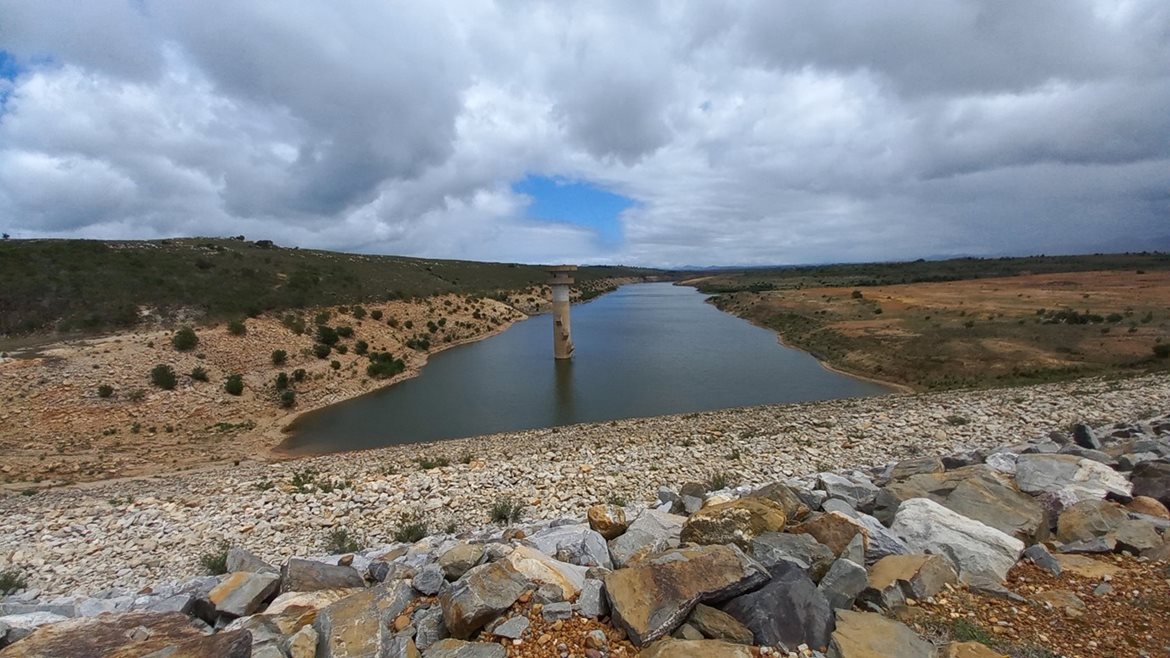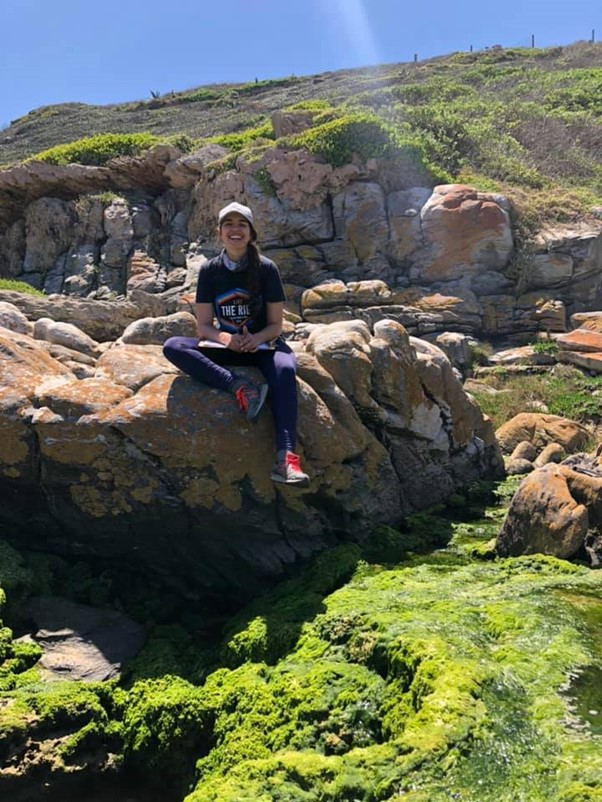A recent article written by her and Dr Gavin Rishworth, a Senior Lecturer in the Zoology Department, looks at the opportunities and threats of groundwater use in urban settings by reviewing global and national research.
Water has always been paramount to human development and has dictated where humans decide to settle. Coastal urbanisation has increased considerably over time, with about 40% of the global population living within 100 km of the coast. Human consumption and industrial development along the coast has therefore increased, putting strain on water infrastructure as well as supply. However, compared to surface water resources, groundwater management is often “out of sight and out of mind”.
Groundwater resides in aquifers underneath our feet. For both the Cape Town and Nelson Mandela Bay municipalities, these aquifers may contain good quality water from the Table Mountain Group rock formation and the Atlantis and Algoa Group aquifers, respectively. This water can potentially satisfy or supplement the need for water during periods of drought, especially as these municipalities grow. Sustainable management strategies of this water supply need to consider potential threats that inland and surface water supplies do not suffer from. This includes ecological threats like saltwater intrusion, a reduced recharge rate into the subsurface water level, and coastal flooding and erosion. Anthropogenic threats include pollution, overuse, and land subsidence.
In a 2023 research article published in Cambridge Prisms: Coastal Futures entitled “Coastal urban reliance on groundwater during drought cycles: Opportunities, threats and state of knowledge”, Dodd and Rishworth looked at a case study between the Cape Town Municipality and the Nelson Mandela Bay Municipality and how each managed/are managing their respective droughts (for further reading, the article is openly accessible here: https://doi.org/10.1017/cft.2022.11). Cape Town and the surrounding areas suffered a severe drought from 2015 to 2018 and Nelson Mandela Bay is still under severe water restrictions to try and combat the ongoing water shortage. Both municipalities rely mostly on rain-fed water sources.
Although not all droughts are rainfall related, reduced rainfall and poor management worsened this predicament. This is forcing the municipalities to consider groundwater as an alternative water supply. However, the long-term effects on the coastal ecology, the recharge rate and the sustainability of the coastal aquifers are not known. This provides an opportunity for research into coastal groundwater use and a monitoring system to be put in place.

Impofu Dam showing concerningly low water levels in November 2021. Photo: Carla Dodd.
To successfully manage the coastal groundwater systems, these municipalities can learn from the failures and successes of previous global attempts. These are highlighted by Dodd and Rishworth. Their article mentions the salination of aquifers in Italy due to over-abstraction and that this is not forming part of their management plan. However, Australia has been successful in groundwater monitoring and sustainable use when taking this into consideration. Australia is also implementing desalination plants in Perth and about 39% of Perth’s water supply is coming from this operation while 42% is from groundwater supplies.
Desalination has a high financial and energy cost, which might preclude it as a South African solution given the current chronic load-shedding. Furthermore, by increasing social awareness and behavioural shifts during their Millennium Drought (1996-2010), Perth successfully avoided a “Day Zero” situation.
Even though the urban population has increased after that time, the water use was lower post-drought. Another small-scale success story where groundwater management has proven sustainable, is in coastal Ecuador. Here ancestral knowledge was used in order to increase the groundwater storage capacity during times of water scarcity using artisanal dikes. In Indonesia, their management plan of coastal groundwater use includes the increase of vegetation cover to ensure that rainwater does not wash away and eventually seeps into the aquifers.
They also increase the recharge rate by the construction of water traps and drainage reservoirs. This simultaneously increases water storage and combats saltwater intrusion and land subsidence.
Dodd and Rishworth also go into detail about the issues that South Africa faces when it comes to the sustainable use of coastal groundwater. Saltwater intrusion is increasing due to decreased freshwater flow and altered sediment sources.
In contrast, storms in Cape Town have caused coastal flooding, increased erosion and larger tidal amplitudes. Some areas, such as Strand, are suffering from economic losses, threatened tourism and damage to their infrastructure. Other issues include boreholes that are being clogged by iron and biofouling, a lack of institutional knowledge, insufficient human capacity for maintenance and monitoring, alien vegetation reducing surface runoff, absence of regulatory requirements and limited implementation of restrictions for domestic groundwater use.
Pollution from anthropogenic activities also threatens the quality of groundwater. Desalination is also not always a viable option as an alternative water supply, although it has been used previously in, for example, Mossel Bay.
Groundwater is also of vital importance to many coastal ecosystems and processes, including the unique spring-fed supratidal living microbialite ecosystems (SSLiME) that occur throughout South Africa, but especially along the coast of Nelson Mandela Bay.
These groundwater-dependent ecosystems are at risk if groundwater is not properly managed.

Carla Dodd, PhD candidate in the Geosciences Department at Nelson Mandela University and lead author on the article, at one of the grounder-dependent microbialite pools near Schoenmakerskop. Photo: Janine Adams
Potential mismanagement of water supplies in South Africa is a persistent threat. Accompanying this is aging infrastructure and lack of knowledge of the quantity and quality of groundwater available in many regions, although there are exceptions. Simply put by Dodd and Rishworth, one cannot manage what one does not measure.
Damage to groundwater systems by over-abstraction and pollution can be irreversible, therefore a proactive management strategy is necessary to ensure that the urban areas in South Africa do not run dry and can sustainably survive drought periods. By considering the failures and successes of previous attempts and educating all user groups and stakeholders regarding the threats, we can hope to keep our heads above water.
Written by Larika van Vuuren, Research Assistant at Nelson Mandela University
larikavv@mandela.ac.za
Social media: @SAStromatolites – Facebook; @sa_stromatolites – Instagram
This research is funded by the Water Research Commission (WRC) of South Africa.
Further reading: Dodd, C. & Rishworth, G.M. 2023. Coastal urban reliance on groundwater during drought cycles: opportunities, threats and state of knowledge. Cambridge Prisms: Coastal Futures 1: e11. https://doi.org/10.1017/cft.2022.11